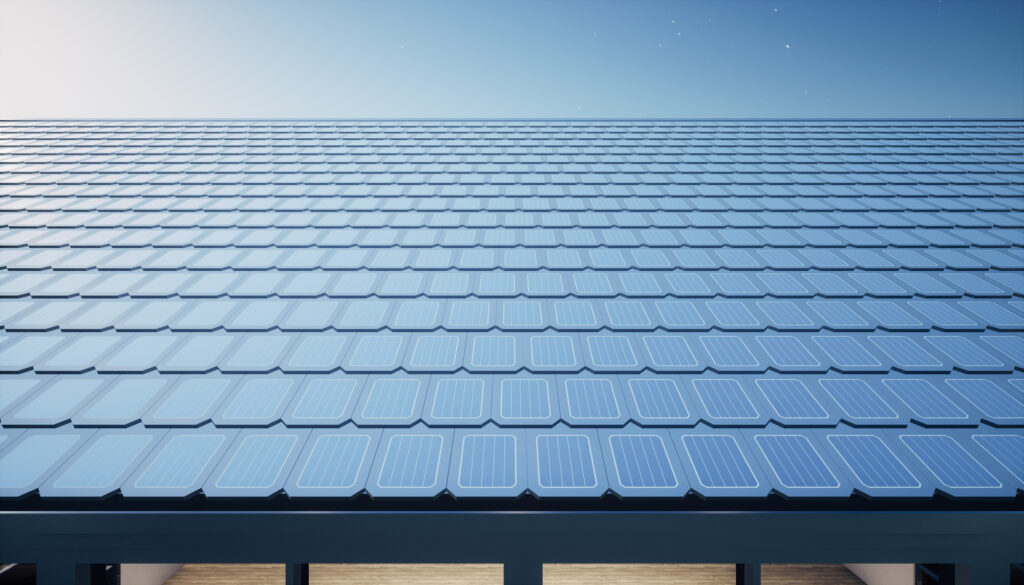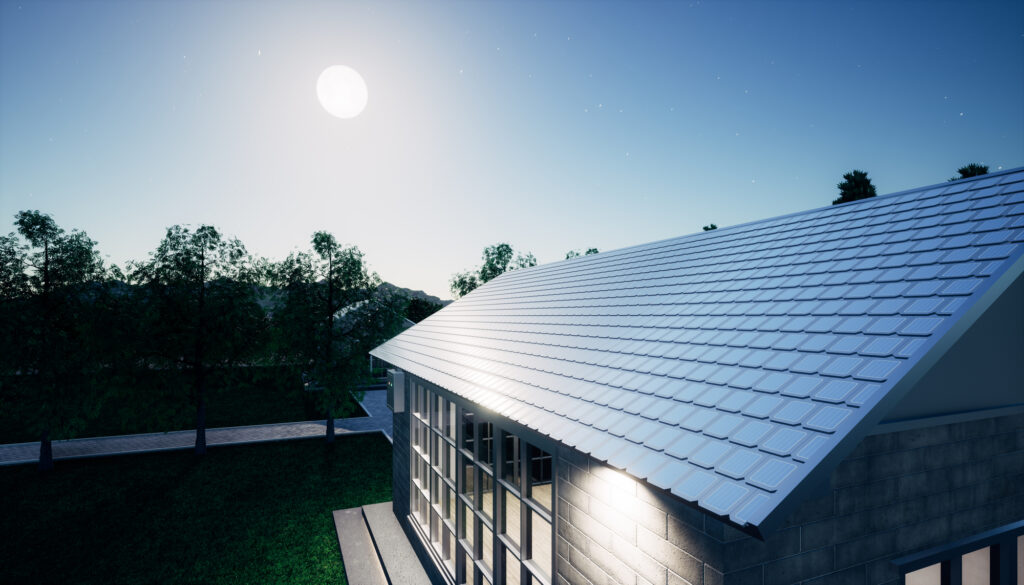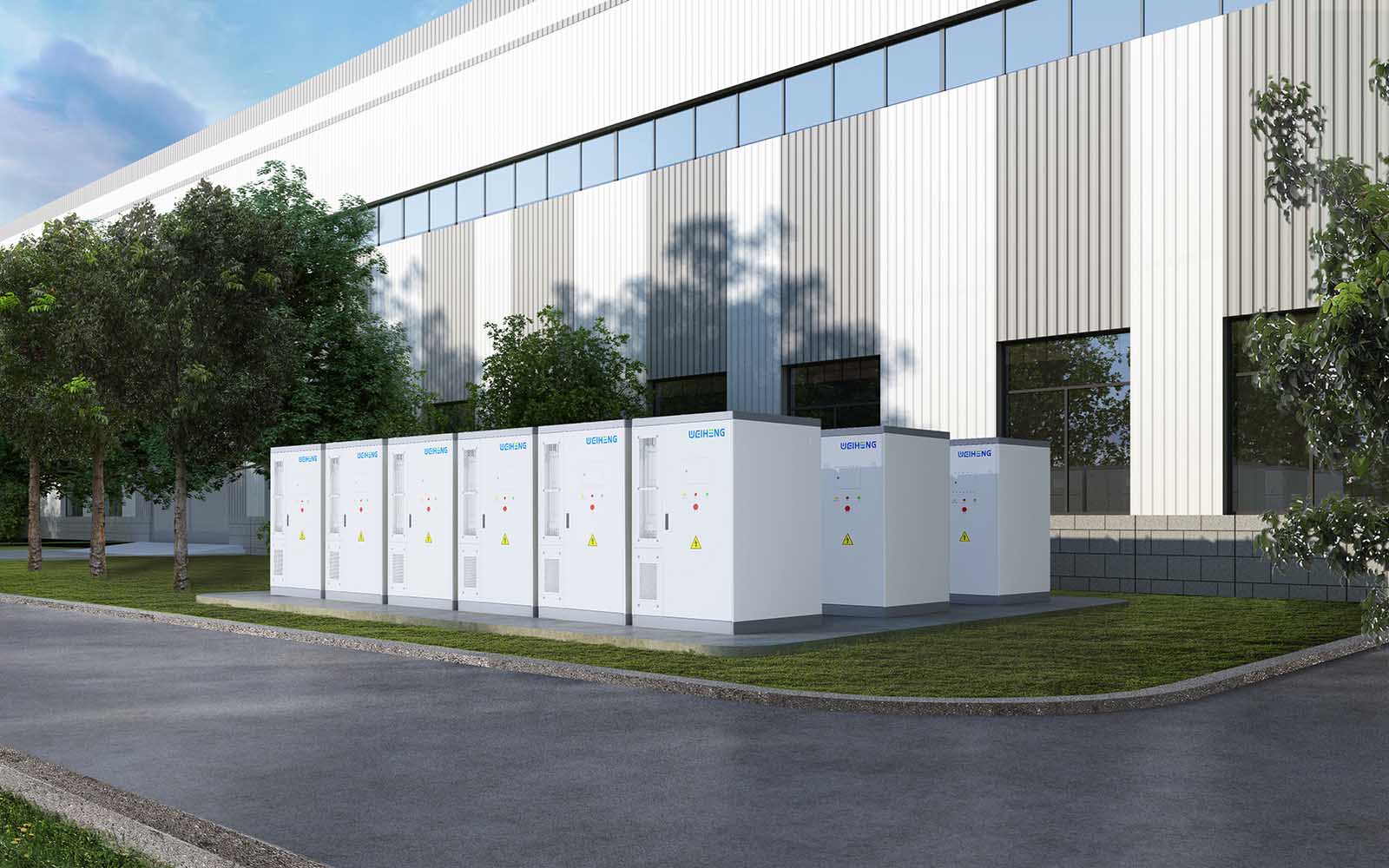
When anybody hears the word “solar”, more often than not, their mind will jump to solar panels. And why wouldn’t they? Solar panels have cemented their place in the world as a hallmark of renewable energy. However, something that people may not have realised is that solar panels have since gone on to evolve into a new, innovative piece of solar technology in the form of solar rooftop tiles.
Solar Rooftop Tiles: What Are They?
For all intents and purposes, solar rooftop tiles are the child of solar panels, the iPhone to the iPod. They take everything about solar panels: their ability to harness sunlight and convert it into usable energy, and combine it with the durability and aesthetics of traditional rooftop tiling.
Unlike traditional solar panels, solar rooftop tiles replace the actual roof tiles, fitting seamlessly into the existing roofline. They offer a more integrated and visually appealing solution, which is beneficial for homeowners who are concerned about the aesthetic impact of traditional solar panels. It is because of this that solar rooftop tiles are a type of solar energy solution known as “building-integrated photovoltaics”.
Solar rooftop tiles are available in a variety of forms. These include tile-sized solid panels, which replace several conventional tiles in a strip; semi-rigid designs, which include several silicon solar cells that are sized more like conventional tiles; and more recent models, which use thin-film solar cell technologies that are comparable to conventional tiles in terms of size and flexibility.
How Do They Work?
But just how does this nifty technology work? Like solar panels, solar rooftop tiles use photovoltaic cells to absorb sunlight and convert it into electricity. This makes them a great renewable source of energy, relying less on the grid for power and contributing towards a greener future.
They can also be combined with Battery Energy Storage Systems (BESS) to enhance their capabilities. In short, a BESS allows excess energy that is generated through solar rooftop tiles in the day to be stored and used at a later time when the sunlight isn’t shining, and the tiles aren’t generating energy. This means that the fantastic sustainability of these tiles can be further utilised at all times of the day, as well as being a great solution to power cuts.
Advantages of Solar Rooftop Tiles
In case you haven’t already figured it out, solar rooftop tiles are highly beneficial for properties with several advantages which make them stand out.
Aesthetic appeal
Blending in and being discreet is a very important factor for many people and is one of the biggest criticisms out there for solar panels. Although this is a misconception, many people believe that solar panels decrease property value and thus impacts their decision to invest.

Unlike solar panels, however, solar rooftop tiles do an excellent job of maintaining a roof’s traditional appearance. They eliminate the bulky nature of solar panels and are easily unidentifiable to the untrained eye. All of this combined with zero loss to solar functionality means that owners of solar rooftop tiles get the best of both worlds.
Durability
It goes without saying that nobody wants to invest in technology that is going to break easily. Thankfully, this isn’t the case with solar rooftop tiles, in fact, far from it. Like is the case with aesthetic appeal, one of the best parts about solar tiles coming after solar panels is that designers/developers know what weaknesses need to be improved; Solar panels walked so solar rooftop tiles could run.
Solar panels don’t necessarily have bad durability by any means, but solar tiles have received tender treatment to ensure that they can withstand even the harshest of weather conditions.
Most manufacturers offer a power output warranty of at least 25 years, meaning solar tiles will continue to produce at least 80% of their power after this time. However, they can still continue to function far beyond this, to as far as 30-40 years or more.
Increased property value
As mentioned before, a common misconception in the solar industry is that solar panels reduce property values. In fact, the result of solar panels and solar rooftop tiles is the opposite. Solar rooftop tiles can increase a property’s market value by a staggering amount. They are seen as environmentally friendly and energy-efficient, and as a result, many potential buyers will look more favourably towards the property as a whole.
Comparisons With Traditional Solar Panels
When talking about solar rooftop tiles, it’s crucial to compare them with the traditional solar panels we’ve all become accustomed to.
Efficiency
While both solar rooftop tiles and traditional solar panels have their strengths, their energy output can vary. Traditional solar panels have been around longer, and they benefit from the advancements in solar technology leading to higher efficiency rates. On the other hand, solar rooftop tiles, although slightly less efficient, they are often able to cover a larger roof area. This allows for more sunlight exposure, potentially leading to comparable energy outputs in certain cases. As technology progresses, the efficiency gap is likely to narrow further.
Installation
Traditional solar panels are usually installed on top of existing roof tiles, sometimes resulting in a bulky appearance. Solar rooftop tiles, however, integrate directly into your roof, offering a sleek, seamless look. However, installation of solar roof tiles can be more complex and time-consuming due to their integrated nature, which may impact installation costs.
Cost
Initial costs for solar rooftop tiles can be higher than traditional panels, taking into account the costs associated with replacing part or all of the existing roof. However, it’s essential to factor in longer-term savings. Solar rooftop tiles can improve property aesthetics and increase overall property value. Plus, significant savings on energy bills over time can offset the initial outlay, rendering solar tiles as a potentially more economical choice in the long run. Always consider your specific needs and circumstances when assessing the cost-effectiveness of each option.
Overall, it’s clear from this exploration that solar rooftop tiles are a welcome evolution to the ever-growing solar industry. They may not have cemented their place as fully as solar panels have, but being as though they are a very recent innovation, this is sure to change over the coming years.







